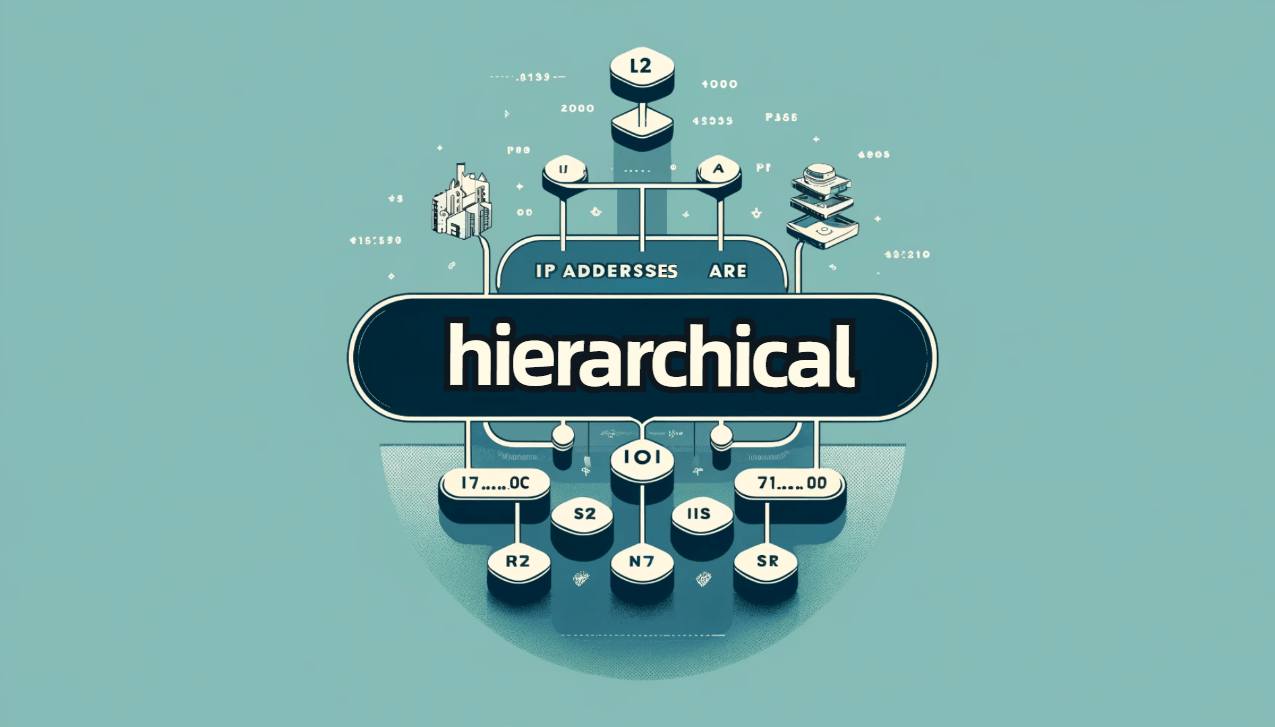IP addresses are hierarchical. What does this mean?

IP addresses are hierarchical. This means:
- a. The information in an IP address goes from broad to specific
- b. The information in an IP address goes from specific to broad.
- c. IP addresses are randomly assigned.
- d. IP addresses have no specific structure.
Which of the above answers is correct? In this blog, you will not only know the right answer, but also learn more about how IP addresses are hierarchical.
What does it mean when IP addresses are hierarchical?
When we say IP addresses are hierarchical, this means: The information in an IP address goes from broad to specific. In other words, they are set up to provide effective management and routing over the internet. The IP address hierarchy facilitates the internet's global scalability by organizing addresses into manageable blocks that are dispersed geographically. The several networks connected to the internet can be routed more quickly and easily thanks to this framework.
When do you encounter the "IP addresses are hierarchical"
The "IP addresses are hierarchical" is frequently applied to network administration, data routing, and design scenarios. Here are a few particular situations when you may run into this idea:
1. Network Planning and Expansion
It is essential to comprehend the hierarchical structure of IP addresses while building or growing a network. This information facilitates the effective distribution of address blocks across network segments according to their size and function, guaranteeing scalable expansion and well-organized administration.
2. Subnetting
A larger network can be subdivided into smaller, easier-to-manage network portions by subnetting. A range of IP addresses is allocated to each segment, often known as a subnet. Network managers may choose how traffic is routed both inside and across subnets thanks to the hierarchical structure.

3. Routing Efficiency
Routers make effective routing decisions by utilizing the hierarchical structure of IP addresses. Routers may swiftly route traffic to the appropriate subnet by examining the network portion of an IP address, which reduces the amount of processing needed and accelerates data transfer.
4. Geographic Distribution
IP addresses are frequently arranged hierarchically by Internet service providers (ISPs) according to a user's location. For instance, distinct IP address blocks are assigned to various areas. This offers hints regarding the regional origin of internet traffic and aids in the effective management of local internet traffic.
5. Troubleshooting Network Issues
The hierarchical nature of IP addresses might aid in the diagnosis of problems pertaining to incorrect routing or network segmentation in troubleshooting settings. This structure can be used by network technicians to isolate issues across network boundaries or inside certain subnets.
In these situations, the hierarchical structure of IP addresses helps with troubleshooting and network security monitoring in addition to ensuring effective network administration and data routing. Network experts and everyone else engaged in the design or administration of IP-based networks must comprehend this idea.
What is hierarchical routing of IP address?
By breaking networks up into smaller sub-networks, hierarchical IP address routing makes traffic on the internet more effectively routed. By distributing control among several network tiers, this structure expedites the routing process, minimizes the size of routing tables, and aids in better system management.

What are the 3 hierarchical parts of an IP address?
An IP address typically consists of three hierarchical parts:
- Network part: Identifies the specific network on which a device is located.
- Subnetwork part: Further divides the network into sub-networks (subnets), allowing for more precise routing within larger networks.
- Host part: Identifies the specific device on the subnet.
What is an example of hierarchical addressing?
An example of hierarchical addressing is the IP address 192.168.1.15, where:
- "192.168" could represent the network part;
- ".1" could denote a specific subnet within that network;
- ".15" identifies a particular device within the subnet.
This structure allows routers to efficiently determine data paths across multiple networks and subnets.
What is IPV4 address notation?
IPv4 address notation employs a 32-bit address format, which is commonly expressed as four integers separated by dots in decimal notation. Every number has a range of 0 to 255. An IPv4 address, for instance, can have the format 192.168.100.5. Both people and robots should find it easy to use and understand this notation.
How are IP addresses structured?
Four octets make up an IP address's structure: a dotted-decimal format that separates the address's network, subnet, and host identities. This structure aids in both logical subdivision and the effective use of various routing algorithms to locate a particular device within a large network.
How is an IP address organized?
The network identification and the host (device) inside the network identification make up the two primary components of an IP address. A third component, the subnet identifier, is employed in more complicated networks to further split up big networks into more manageable sub-networks. This arrangement aids in efficient traffic routing by first sending data to the appropriate subnet, then to the appropriate network, and lastly to the intended device.
